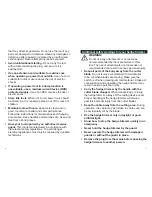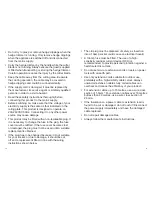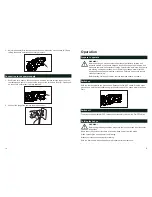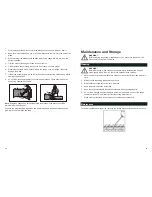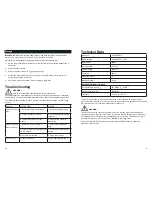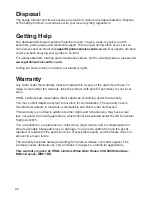
18
19
1. Start trimming at the point nearest to the electricity supply and work away from it.
2. Keep the mains cable behind you at all times. Make sure that it is not in the path of the
blade.
3. When trimming, the blade should be tilted towards the hedge. Always trim from the
bottom upwards.
4. Trim the sides of the hedge first and then trim the top.
5. If the branches are very long, they should be cut back in several stages.
6. Make sure that there are no hard objects in the hedge, such as railings, that could
damage the blade.
7. If the blade becomes jammed, switch off and disconnect from the mains supply before
clearing the obstruction.
8. Do not force the hedge trimmer to cut oversized branches. These should be cut by
hand using secateurs or shears.
15˚
Note:
Evergreen hedges and shrubs that retain their leaves in the winter, should be
trimmed in April and August.
Conifers and other fast-growing shrubs can be trimmed every six weeks throughout the
growing season, from May onwards.
Maintenance and Storage
WARNING!
Before cleaning, inspecting or repairing your unit, make sure the switch is off.
Disconnect the plug from the mains.
Cleaning
WARNING!
Before lubricating, make sure your hedge trimmer is disconnected from the
mains supply. Apply the oil so that it runs between the two blades.
1. Never use water or chemical cleaners to clean your power tool. Wipe clean with a dry
cloth.
2. Always check the cutting blade before each use.
3. Always store your power tool in a safe, dry place.
4. Keep the motor ventilation slots clean.
5. Have the unit professionally repaired should there be any damaged parts.
6. Do not allow cuttings and other debris to become dry and hard on any of the hedge
trimmer surfaces. This will directly affect the cutting performance.
7. Make sure that the blade is kept clean of all cuttings and other debris.
Maintenance
For easier operation and longer life, lubricate the cutting blades before and after each use.




